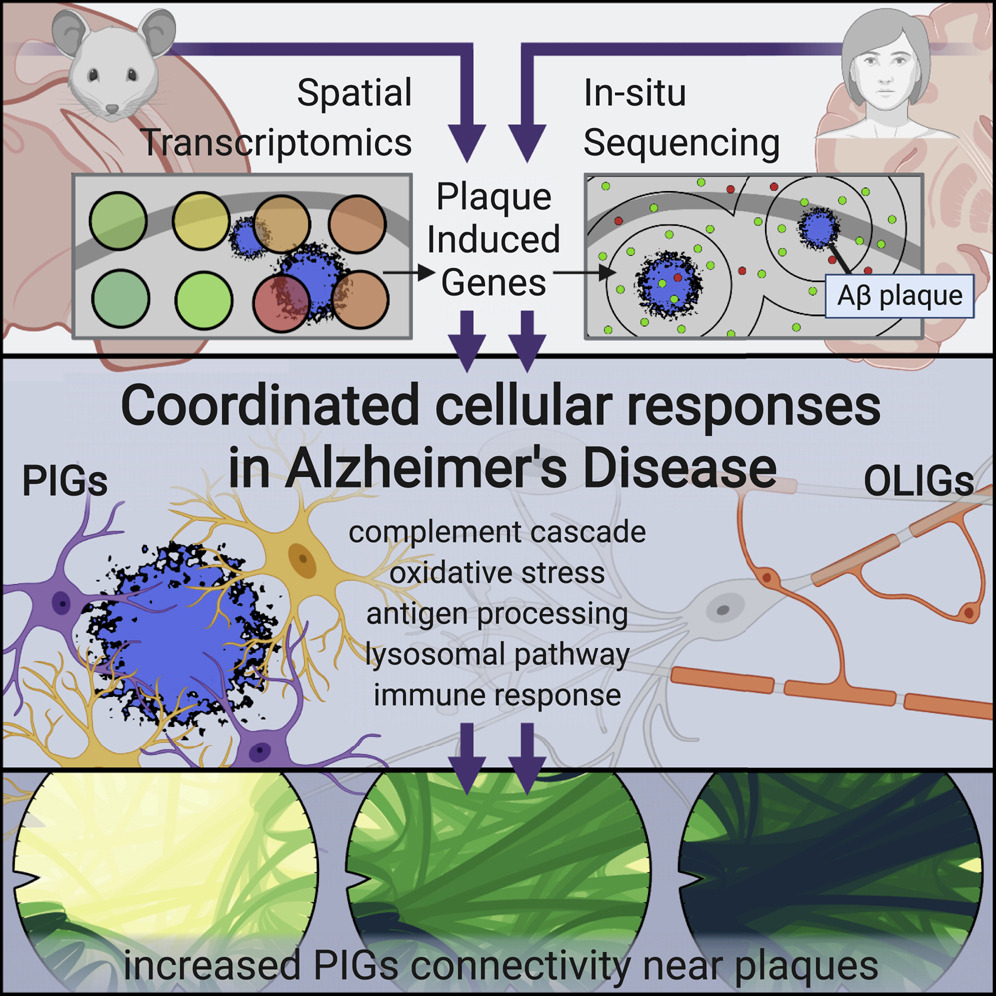We're excited to highlight a landmark study that used spatial transcriptomics to map the molecular and cellular landscape around amyloid plaques in Alzheimer's disease (AD).
Scientific Context: The study aimed to dissect how different brain cell types interact and respond to amyloid plaque accumulation—a central feature of AD. By integrating spatial transcriptomics and in situ sequencing, the researchers revealed coordinated, multicellular gene networks that evolve with disease progression.
How were 10x Genomics' products used?
Researchers applied the 10x Genomics Spatial Transcriptomics platform (now part of the Visium product family) to mouse and human brain tissue. This technology enabled unbiased, genome-wide mapping of gene expression in hundreds of small tissue domains, preserving spatial context. The team identified two major gene co-expression networks:
- A plaque-induced gene (PIG) network involving microglia and astroglia, linked to inflammation, complement activation, and lysosomal pathways.
- An oligodendrocyte gene (OLIG) response associated with myelination and altered in the presence of amyloid plaques.
These findings were validated at single-cell resolution using in situ sequencing, confirming the multicellular nature of these responses in both mouse models and human AD brains.
Impact: 10x Genomics technology was critical for uncovering spatially coordinated gene expression changes and intercellular crosstalk in the AD brain. This approach sets a new standard for studying neurodegenerative diseases and provides an open-access resource for the research community.

BonsaiLab: Your 10x Genomics Partner in Spain and Portugal
As the official distributor of 10x Genomics in Spain and Portugal, BonsaiLab is ready to help you leverage spatial transcriptomics and single-cell technologies in your neuroscience or disease research.
Contact us and let's arrange a meeting!
Curious to learn more?
Read the full study: Here
BonsaiLab: Your 10x Genomics Partner in Spain and Portugal

